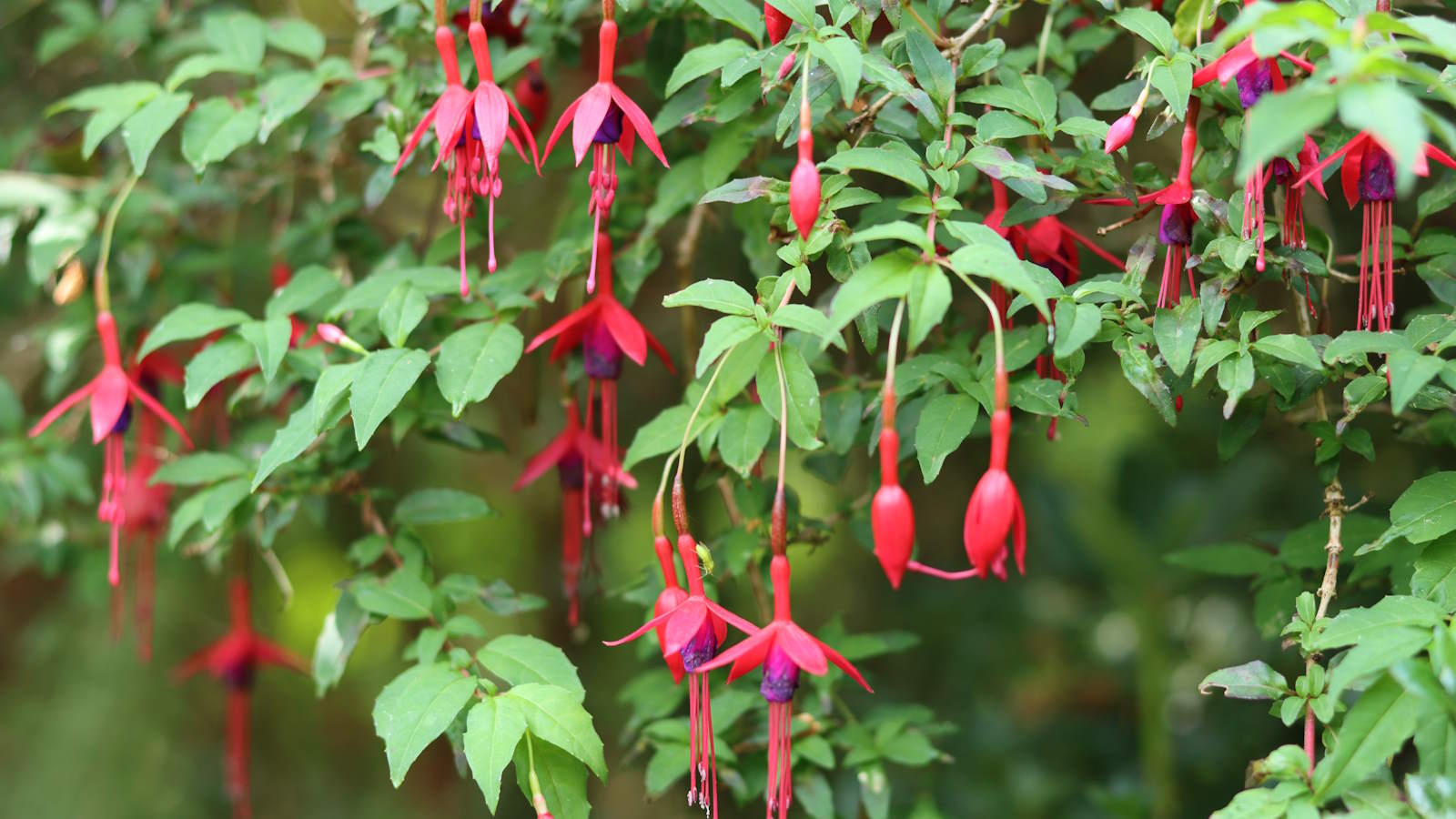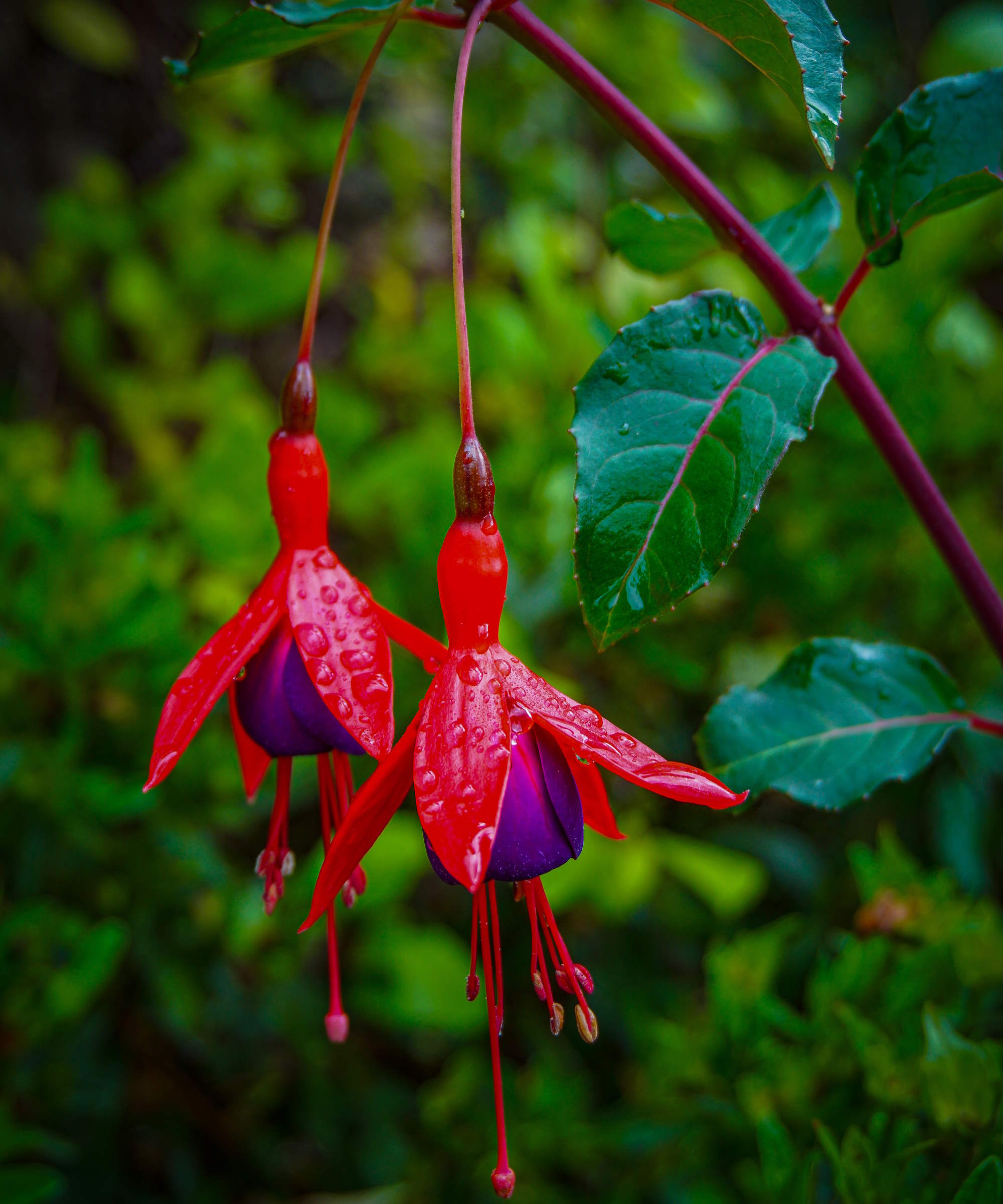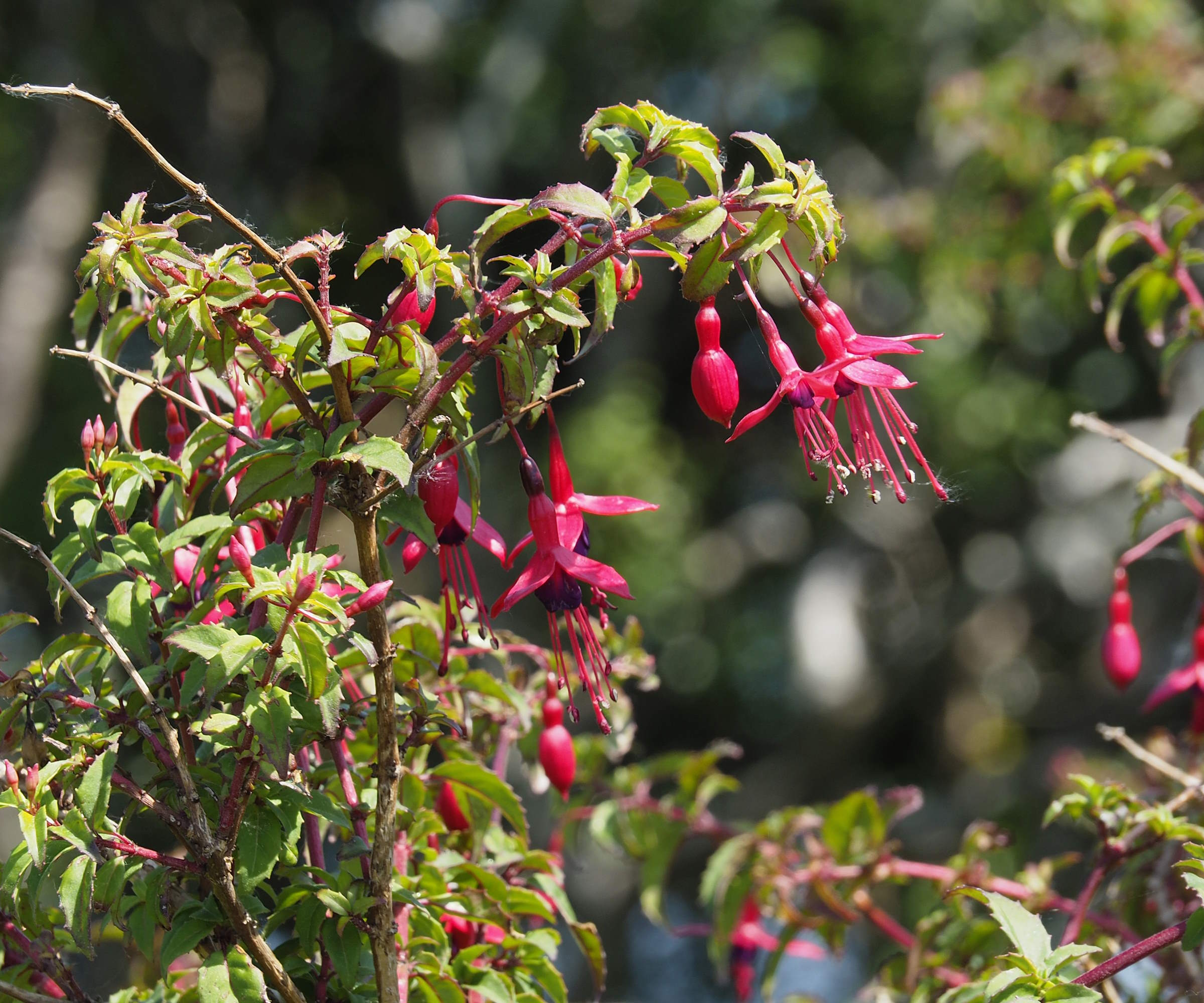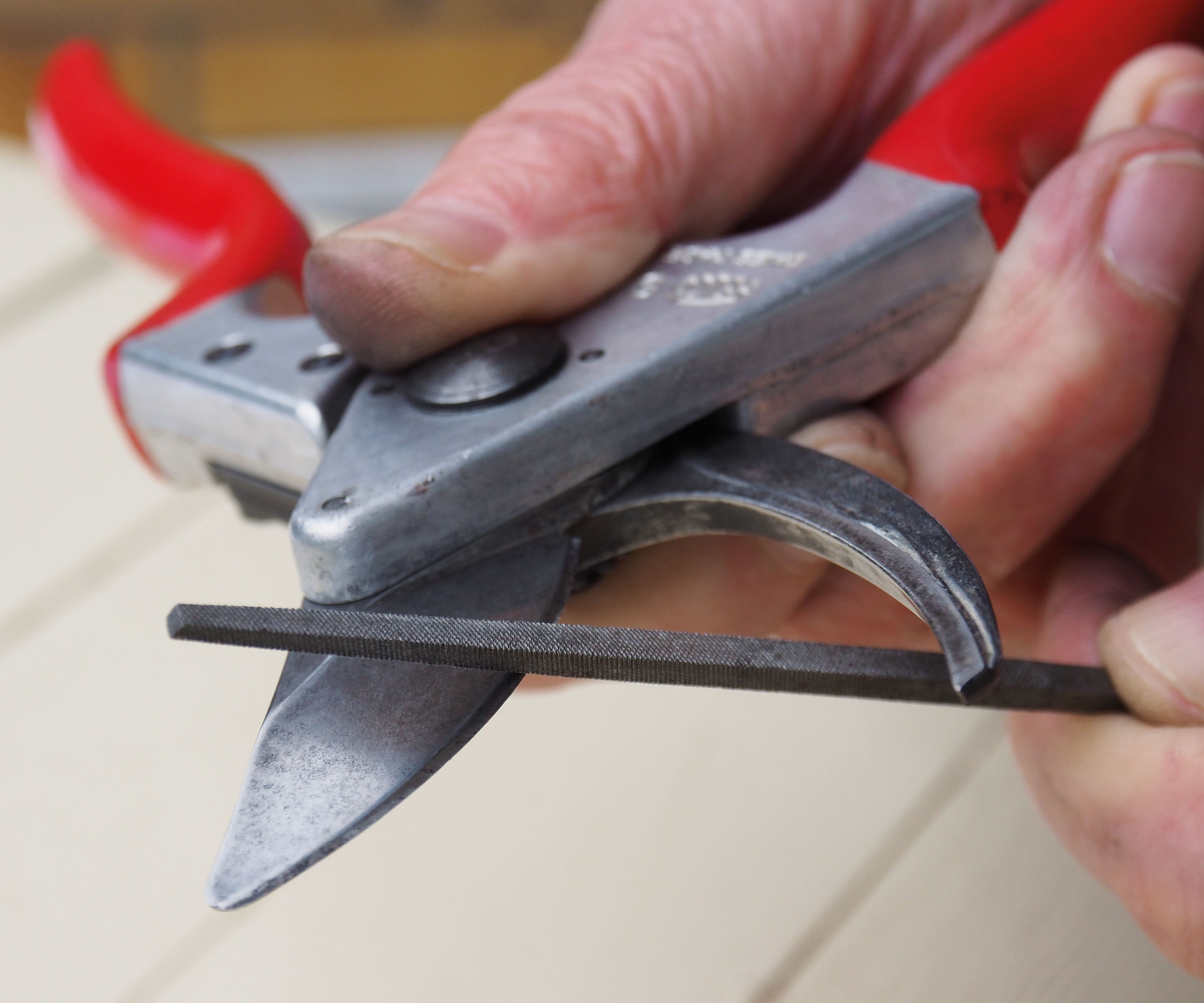
Fuchsia are well-loved for their pendulous flowers that dazzle in the summer and the plants come in both hardy and tender varieties. Hardy fuchsias can survive the winters outdoors in US hardiness zones 6-11 and need to be kept looking at their finest by being pruned each year.
Annual trimming is an important part of how to care for fuchsias that are hardy enough to overwinter. It helps keep the plant healthy, neat and compact and also promotes a plethora of new growth to carry that year’s display of flowers.
Pruning hardy fuchsias is a simple task for any gardener and it can be done in as quick as just three simple steps each year. If your plant needs a bit more renovation, then it can even be rejuvenated with a bit of a harder prune. We take a look at both approaches to hardy fuchsia pruning to help your plants thrive.

Tools required to prune hardy fuchsia
Pruning hardy fuchsia requires only a few common gardening tools. A pair of pruning shears should be needed for most of the work, while a pair of loppers may be required for thicker branches.
Any garden tools must be clean and sharp before pruning. This will make pruning easier, your cuts will be cleaner, and it eliminates the risk of transmitting diseases around the garden.
A pair of high-quality pruning shears with forged aluminum handles and hardened steel blades for effortless trimming
A pair of lightweight but durable steel bypass loppers with hardened carbon steel blades to cut material up to 1" wide
Keep your garden tools sharp with this simple and easy to use sharpener to quickly put a sharp edge on your blade
When is the best time to prune hardy fuchsias

Picking the right time to prune hardy fuchsias makes sure that the plant responds well to the trimming and goes on to put on a beautiful display of blooms again. Hardy fuchsia are very easy to maintain and their pruning requirements are fairly simple year-on-year.
The ideal time to prune comes after the risks of frosts have ended for your climate in late winter or early spring and you start to see the first signs of new growth for the year. When the time to prune in spring does arrive and the plant starts putting on new growth will depend on your climate, however, hardy fuchsia tend to be plants to prune in March or April.
‘This timing allows the plant to quickly recover and utilize its energy to produce robust new growth as the weather warms, says Juan Palacio, CEO of BloomsyBox. ‘Pruning during this period minimizes the risk of damaging tender new shoots that might emerge if pruning is done too late in the season.
The colorful plants can survive harsh winters - unlike the tender fuchsias that are popular annual plants for hanging baskets - but you put them at risk of succumbing to cold if you prune in winter. The top growth insulates the plant over winter, therefore pruning a fuchsia in winter is a major pruning mistake if you live in a US hardiness zone that gets winter frosts.
How to prune hardy fuchsia

The process of pruning hardy fuchsia can be a nice quick job to add to any spring gardening checklist. Another bit of good news is that fuchsias flower on new growth created that season, so you do not risk removing material that may carry the flowers if you prune at the right time of year just as the plant is starting to actively grow again.
Pruning in late winter or early spring is the ideal time to assess the plant and shape it, as well as trim it to improve its overall health. There are three simple steps to follow to get a well-shaped and healthy hardy fuchsia each spring:
- The first step should be to take your clean and sharp pruning shears and remove any dead, diseased, or damaged wood that you can identify
- Then look for any thin, weak, or crossing wood that is best removed. Pruning out these should help to thin the center of the plant and improve the overall air circulation and light penetration into the fuchsia
- Gently shape the fuchsia by pruning the previous year’s growth back to around 3-4 inches from the ground. Cut back to a set of strong and healthy buds and the plant will respond by putting on new shoots to carry flowers and create a bushy shape overall
It is often recommended to observe the one-third pruning rule and not remove more than a third of the overall wood at one time. However, you can prune a bit harder when it comes to hardy fuchsias and they will recover from it.
This approach can be taken with older plants that require revitalization. Evan Torchio, the CEO of Tree Menders, says: ‘If your fuchsia is overgrown, don't be afraid to give it a harder prune. You can cut it back all the way to the base for a complete rejuvenation.’
Hardy fuchsias are popular as colorful hedging plants and they do also benefit from gentle shaping in early spring. Take time to assess the hedge before trimming and, after removing any dead, diseased, or damaged growth, look to cut back stems to a pair of buds to create an even shape across the hedge.
FAQs
What happens if you don't prune fuchsia?
Not pruning a fuchsia will not stop it from flowering, but the display is likely to be under-par compared to a pruned fuchsia. Pruning encourages lots of flowering as it promotes the growth of more stems on which the plant can bloom on the tip of each stem. Not pruning can also increase the risk of the plant succumbing to pests or disease, due to a lack of light and air circulation and the potential presence of dead or diseased material.
Hopefully, you now have the confidence to be able to head out into the backyard this spring and prune your hardy fuchsia without fearing making any pruning mistakes that may risk the health of your plants. There may also be more plants to prune in spring in your backyard, including other summer-flowing shrubs like fuchsia such as the butterfly bush, crepe myrtle, and spirea.







